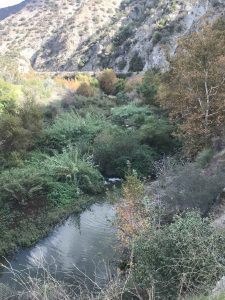Modeling analysis to inform adaptive management of San Gabriel River flow diversions

SCCWRP and its partners have completed a modeling analysis to understand how diverting treated wastewater discharges from the San Gabriel River for water recycling purposes affects the biological health of downstream reaches of the river – an effort that will inform long-term adaptive management planning for the river’s flow diversions.
The analysis, completed in June using advanced statistical models, represents the first time that modeling has been used in California to inform adaptive management planning in support of flow diversions authorized under the State Water Board’s Section 1211 wastewater change petition process.
In 2018, the Los Angeles County Sanitation Districts (LACSD) received regulatory approvals to recycle some of its treated wastewater effluent that has historically been discharged to the San Gabriel River; as a condition of approval, the agency was required to develop an adaptive management plan that explains how it will assess potential ecological effects from the diversions and make adjustments to the diversions as necessary to better protect ecosystem health.
The modeling analysis, which used five years of initial monitoring data, has helped draw out the factors, variables and nuances that managers will need to pay attention to when refining LACSD’s adaptive management planning efforts.
More news related to: Ecohydrology